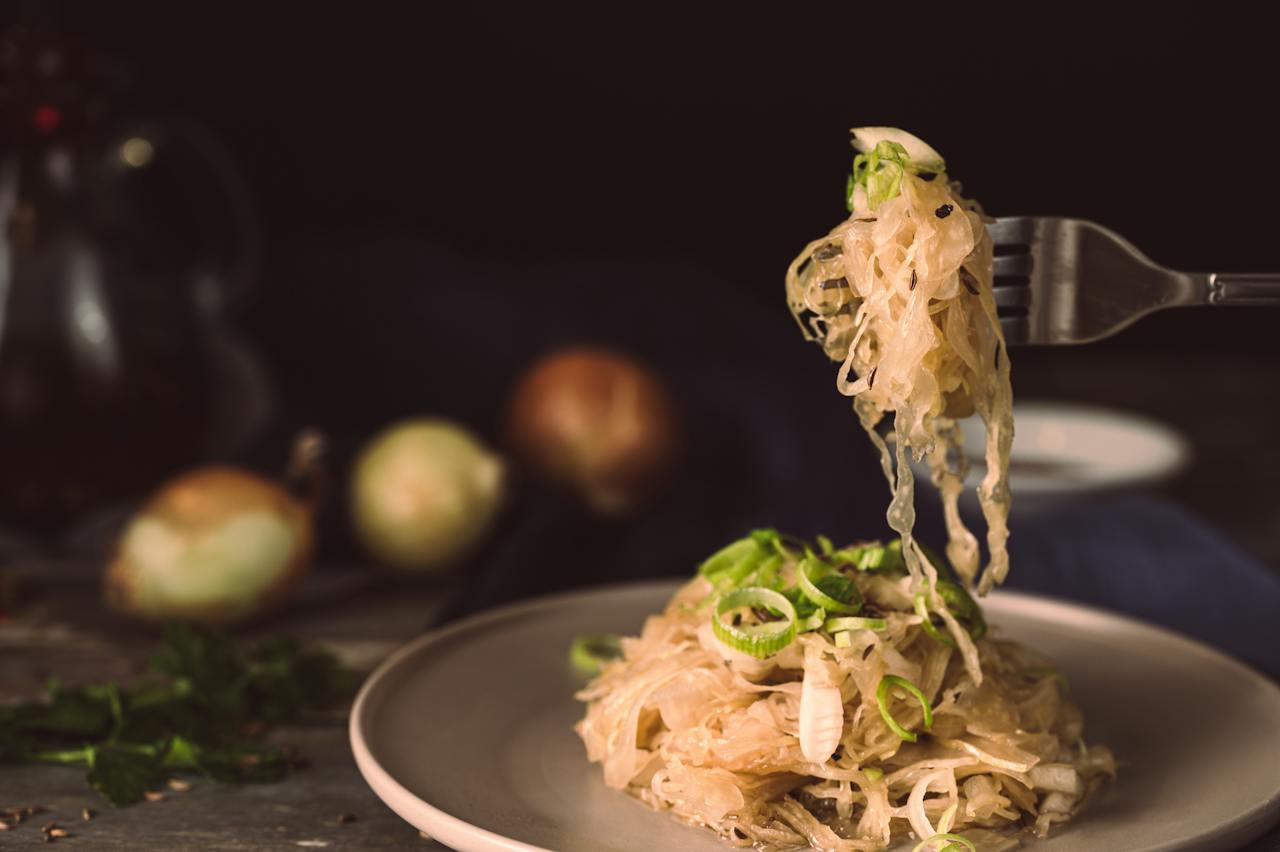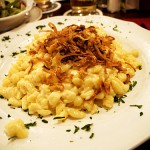
Sauerkraut, the tangy and iconic fermented cabbage dish, has been a staple in German cuisine for centuries. Its unique taste, health benefits, and storied history have cemented its status not only in Germany but also across the globe. This comprehensive exploration will unveil the origins, evolution, and enduring appeal of sauerkraut in the fabric of German culinary traditions.
Sauerkraut, from the German words “sauer” meaning sour and “Kraut” meaning cabbage, is much more than a simple side dish. It’s a culinary artifact that has woven itself into the cultural and historical tapestry of Germany. This fermented cabbage has a story to tell, one that encompasses tradition, adaptation, and resilience.
Historical Origins of Sauerkraut
Contrary to popular belief, the concept of fermenting cabbage was not originated in Germany. The roots of sauerkraut can be traced back to ancient China, over 2,000 years ago, where laborers building the Great Wall consumed fermented cabbage, which was later brought to Europe by nomadic tribes, including the Tatars.
Sauerkraut’s Journey to Germany
The fermentation of cabbage was adopted in various European cultures, but it found a special place in Germany. The Germanic tribes, known for their adaptability, embraced this method of preservation, especially given the harsh winters. By the Middle Ages, sauerkraut had become a German staple, valued for its long shelf life and nutritional properties.
Sauerkraut’s versatility has allowed it to be a key component in many traditional German dishes. It’s often paired with rich meats like pork, sausages, and kassler, balancing the flavors with its acidity. Dishes like Choucroute garnie, a hearty Alsatian meal, showcase the integral role of sauerkraut in regional cuisines.
Fermentation: The Science Behind Sauerkraut
The fermentation process is what gives sauerkraut its unique characteristics. Lactic acid bacteria, naturally present on cabbage, ferment the sugars, creating lactic acid. This not only preserves the cabbage but also enhances its nutritional value, including Vitamin C and digestive enzymes.
Sauerkraut During Times of Scarcity and War
Sauerkraut has played a critical role during times of scarcity and war. Its vitamin C content was particularly valued during long sea voyages to prevent scurvy. In World War I, British and French soldiers were issued sauerkraut for this reason, ironically consuming a staple of their German enemy’s diet.
Sauerkraut in Folklore and Traditions
Beyond the plate, sauerkraut holds a place in German folklore and traditions. It is considered a symbol of wealth and abundance and is traditionally eaten on New Year’s Day to bring prosperity. This tradition reflects the deep cultural significance of sauerkraut in German society.
The global diaspora of Germans in the 19th and 20th centuries helped spread the popularity of sauerkraut. In the United States, it became associated with German-American culture, particularly in regions with significant German immigrant populations, like Pennsylvania and the Midwest.
Today, sauerkraut continues to evolve. Chefs and home cooks alike experiment with different cabbage varieties and additional ingredients like apples, caraway seeds, and even seaweed. This innovation keeps the tradition alive, adapting to contemporary palates while respecting its roots.
Health Benefits of Sauerkraut
Modern science has highlighted the health benefits of sauerkraut, especially as a probiotic food. Its role in promoting gut health, boosting immunity, and potentially reducing the risk of certain diseases, aligns with the growing interest in functional and healthful foods.
In contemporary German cuisine, sauerkraut is both a link to the past and a canvas for innovation. Traditional recipes coexist with modern interpretations, reflecting the dynamic nature of German culinary culture. It is a testament to the adaptability and endurance of this humble dish.
Home Fermentation: The Revival of Sauerkraut Making
There has been a revival in home fermentation, with more people discovering the joys and benefits of making sauerkraut at home. This resurgence connects individuals to the culinary traditions of their ancestors, fostering a deeper appreciation for this time-honored practice.
The story of sauerkraut in German cuisine is a rich narrative of history, culture, and gastronomy. From its ancient origins to its role in modern kitchens, sauerkraut is more than a dish; it’s a cultural icon, embodying the resilience, adaptability, and culinary excellence of Germany. As we explore and appreciate this fermented wonder, we partake in a tradition that spans centuries, a tradition that continues to evolve and inspire.
 Beer Bratwurst with Caramelized Sauerkraut
Beer Bratwurst with Caramelized Sauerkraut Bratwurst Sauerkraut Casserole with Pretzels
Bratwurst Sauerkraut Casserole with Pretzels Eintopf – Sauerkraut Stew with Sausages
Eintopf – Sauerkraut Stew with Sausages German Sauerkraut with Apples Recipe
German Sauerkraut with Apples Recipe Sauerkraut Cheese Spätzle
Sauerkraut Cheese Spätzle Sauerkraut Martini
Sauerkraut Martini Sausage and Sauerkraut Pockets (Würstchen & Sauerkraut-Taschen)
Sausage and Sauerkraut Pockets (Würstchen & Sauerkraut-Taschen) Schinken-Sauerkrautrollen – Sauerkraut and Ham Rolls over Cheesy Potatoes
Schinken-Sauerkrautrollen – Sauerkraut and Ham Rolls over Cheesy Potatoes The Rich History of Sauerkraut in German Cuisine: A Culinary Journey
The Rich History of Sauerkraut in German Cuisine: A Culinary Journey






